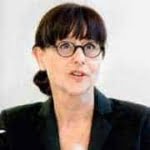Fingerprint for the language
![[shutterstock.com:603058394 , Nikelser]](https://e3mag.com/wp-content/uploads/2017/03/shutterstock_603058394.jpg)

For all the support they get from sophisticated questionnaire systems, recruiters and HR managers still can't look into applicants' heads. But they can now use modern tools to create comprehensive language profiles, for example, and thus provide a detailed look at personality.
In this way, staffing decisions can be made on the basis of objective statements - both on professional competencies and on all relevant personal competencies.
Every day, we communicate with other people and exchange an average of 16,000 words a day. The way people speak and write is as individual as a fingerprint. This allows people to recognize each other by their voice, but also to assess the mood of the other person.
Now there is a new type of aptitude diagnostics procedure developed by the company Precire that makes use of precisely this individually unique language profile.
The tool "JobFit" is useful for different use cases: from hiring graduates by opening up personal dimensions in addition to comparing study results to analyzing the personal fit of seasoned professionals and managers.
Through aptitude diagnostic methods, companies gain additional and, above all, objective statements that provide more certainty in the selection of applicants.
This is because aptitude diagnostics makes a decisive contribution to finding out the personal characteristics of candidates that are really relevant to the job. This enables HR consultants to suggest to clients not only the best professional candidates, but also those who are an ideal personal fit for the company.
"Before the project with 1a Zukunft, I was convinced that the professional success of SAP consultants was based solely on technical knowledge."
Agostino Cisco from Precire GmbH explains the initial situation before the project start.
"As it turns out, communication and personal qualities also play a much bigger role than expected in this very technical job description."
Since Precire combines technology and psychology, they have now created an almost ideal consulting tool for this professional group.
So what sets Precire apart from other tools? It comes down to the differences from comparable tools.
First and foremost, this includes language recording. Here, no questionnaires are filled out, as is usually the case online or on paper. Instead, questions are answered orally, whereby the content of the answers is not important.
The language construct with its more than 500,000 building blocks is stable and forms an individual "linguistic fingerprint" of the individual person in the respective expression. This makes the result objective, because it cannot be consciously influenced by the speaker. This is unique in the world so far.
As one of the participants in the pilot project, SAP consultant Dr. Daniel Müller is enthusiastic about the innovative approach of this exciting project.
"He's going to make a big splash"
Müller is certain. However, just such an approach requires a high degree of clarity and transparency.
"These are precisely the points that I believe are central to success - and also have room for improvement in previous systems."
After all, if an applicant does not know exactly how the respective selection procedure works, he or she may not undergo the procedure.
Focus on communication features
How exactly does the newly developed tool work? Precire is a technology that identifies patterns in spoken and written language and derives linguistic, psychological, and communication-related features from them.
Human language not only conveys feelings and thoughts: it contains much more information, which is, however, encoded in the human language DNA and thus not easy to extract. Precire can analyze this language DNA down to the smallest detail.
However, these studies captured not only the language, but also the motives, attitudes, and behaviors of many different people so that a general reference could be established.
By matching the speech with this reference, Precire recognizes individual patterns in the complex structure. These patterns reveal characteristics of the individual personality, decode communicative modes of action, and filter out emotions from speech; for example, stress can be detected and measured.
Comparison group of top candidates
In order to be able to use an aptitude diagnostic procedure in a targeted manner, a comparison group is required in every case. This must consist of people who belong to the respective occupational group.
In the specific case, this was the group of IT/SAP consultants. To this end, the most qualified candidates were invited to participate in the pilot project and form this comparison group. Interest was lively - the majority of those invited took the test.
First, each pilot participant received access data for a telephone call via e-mail and then conducted a 15-minute automated telephone interview at a random time. Subsequently, the delivered voice samples were examined and evaluated by Precire.
The evaluation provided information on the applicant's communication skills, personality traits, and job-related competencies (skills).
This information can be aggregated into one statement, the so-called fit factor. This summarizes the degree of fit between qualification and requirement.
Four characteristics, which count toward the fit factor, make a statement about the applicant's ability to work in a team, how strong his leadership skills are, how strong his sales skills are, and what his service profile is like.
The reference group
In fact, the reference group of SAP consultants has an independent profile that differs from the general norm sample. This is particularly well illustrated by the linguistic characteristics, where many readers will surely find themselves.
In order to establish as concrete a link as possible to daily recruiting work, the soft factors of 1a-Zukunft customers' job postings were analyzed.
In the job descriptions, there are a number of requirements that are most frequently mentioned, such as communication skills, customer orientation, presentation skills, teamwork skills and initiative.
In addition, communication is important: It is important for an SAP consultant to communicate clearly and understandably and to adapt to the respective interlocutor. This is summarized under the term target group-appropriate communication.
Another requirement is the ability to recognize where and how you can pick up the customer. So you have to meet the customer with empathy.
All these factors are determined by "Precire JobFit" in an efficient way.
Tim Lessel also took part in the pilot project. At the beginning of the test phase, the SAP SCM unit manager still had slight reservations, as he openly admits.
"However, I was pleasantly surprised by the results at the latest. I was able to trace almost every statement in the various criteria back to my own person."
Thus, speech diagnostics was indeed able to adequately describe Lessel's traits and characteristics.
By using Precire, a company can make its hiring processes faster and more secure. Both are an advantage over traditional hiring/recruiting practices.
If, in addition to the - indisputably necessary - professional experience, the corresponding personal suitability is also present and confirmed by an objective procedure, the risk of incorrect personnel decisions is minimized.
For companies, minimizing the risk of miscasts ultimately pays off twice and in cash.
On the one hand, this avoids a costly and sometimes lengthy carousel of appointments and applications. On the other hand, positions filled with the right candidates ensure the long-term success of the company.
So a real return on investment is measurable. Tim Lessel is also convinced that this process can help companies find the right "character" at an early stage of an application phase:
"This saves time and therefore money."
How SAP consultants speak
The pilot participants tend to use comprehensible, concise and catchy language. They use fewer synonyms and repeat words more frequently than the average for the German population as a whole to describe facts or express themselves in general. On the other hand, SAP consultants use more words in the same amount of time and form significantly longer sentences. In this way, they convey more information at once - yet the statements remain comprehensible due to the lower linguistic diversity.
The cognitive processes in the participants' language are characterized by an above-average number of categorizations into temporal and especially spatial classifications. Temporal categorizations include words and phrases that suggest temporal contexts, such as "now," "later," or "tomorrow." Spatial classifications include words and phrases such as "here", "there", or "above". Furthermore, there are also deliberative formulations such as "on the one hand, on the other hand". This language pattern is supplemented by very few discrepancies. This refers to formulations that express a contradiction or describe facts that are not yet as they should be (such as "would have", "would be" or "could be").
In terms of conveyed emotionality, the language of the participants is extremely sober. Both explicit emotion words (positive & negative) and valence words are used very rarely. Valence words are words that convey an implicit emotion (positive: "warmth", "home", "vacation"; negative: "war", "death", "stress"). By largely avoiding negations, the "SAP consultant language" appears goal-oriented and focused on the positive.
The distribution of responsibility in the language is characterized by a clearly below-average use of the first person reference (1st person singular: "I", "me", "my"). Both the group reference (1st person plural: "we", "us", "our") and the indefinite pronouns ("man", "someone") are averagely pronounced.




